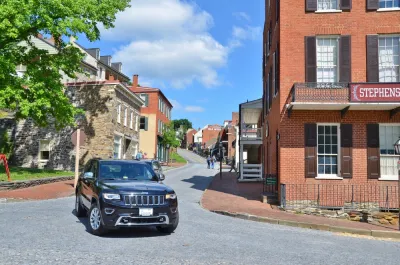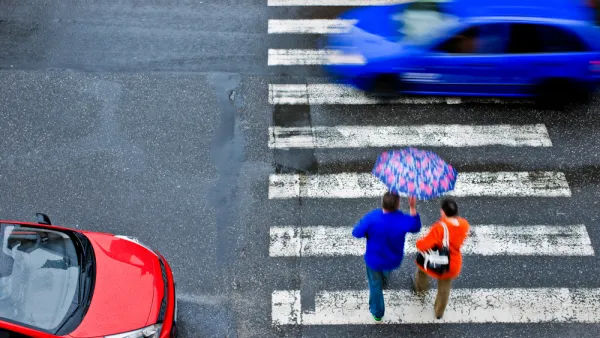While much focus is on the future of autonomous vehicles, the increase in pedestrian deaths related to SUVs remains a largely ignored issue.

Recent debates about self-driving vehicles and public safety have overshadowed the long-standing issue of SUVs, writes Henry Grabar. The overall number of traffic fatalities decreased in 2018, but pedestrian and cyclist deaths are on the rise. More SUVs are on the road, and that is part of the problem, says Grabar:
In February, the Governors Highway Safety Association estimated that more than 6,200 pedestrians died in 2018—the highest number in a generation, and an increase of 50 percent from 2009. The GHSA says SUVs are partially responsible: Their involvement in fatal crashes is up 50 percent, compared with 30 percent for sedans.
The National Highway Traffic Safety Administration has known for years that the weight, higher bumpers, and limited visibility of SUVs mean pedestrians are more likely to be killed when struck by the vehicles. "The regulators did nothing. If another product saw its nonuser death count spike by 50 percent in 10 years, consumers would revolt and Congress would make a big show of getting to the bottom of it. Automobiles are different," argues Grabar.
Regulation in Europe—where SUV sales are up, but pedestrian deaths decreased by over a third between 2007 and 2016— could provide some clues for the U.S., notes Grabar. Safety assessments of European vehicles include a "vulnerable road users" criterion. "In America, by contrast, NHTSA ratings have three primary categories: frontal crash, side crash, and rollover. What happens to the people you hit? Who knows."
FULL STORY: Don’t Count on U.S. Regulators to Make Self-Driving Cars Safe for Pedestrians

National Parks Layoffs Will Cause Communities to Lose Billions
Thousands of essential park workers were laid off this week, just before the busy spring break season.

Retro-silient?: America’s First “Eco-burb,” The Woodlands Turns 50
A master-planned community north of Houston offers lessons on green infrastructure and resilient design, but falls short of its founder’s lofty affordability and walkability goals.

Delivering for America Plan Will Downgrade Mail Service in at Least 49.5 Percent of Zip Codes
Republican and Democrat lawmakers criticize the plan for its disproportionate negative impact on rural communities.

Test News Post 1
This is a summary

Test News Headline 46
Test for the image on the front page.

Balancing Bombs and Butterflies: How the National Guard Protects a Rare Species
The National Guard at Fort Indiantown Gap uses GIS technology and land management strategies to balance military training with conservation efforts, ensuring the survival of the rare eastern regal fritillary butterfly.
Urban Design for Planners 1: Software Tools
This six-course series explores essential urban design concepts using open source software and equips planners with the tools they need to participate fully in the urban design process.
Planning for Universal Design
Learn the tools for implementing Universal Design in planning regulations.
EMC Planning Group, Inc.
Planetizen
Planetizen
Mpact (formerly Rail~Volution)
Great Falls Development Authority, Inc.
HUDs Office of Policy Development and Research
NYU Wagner Graduate School of Public Service





























